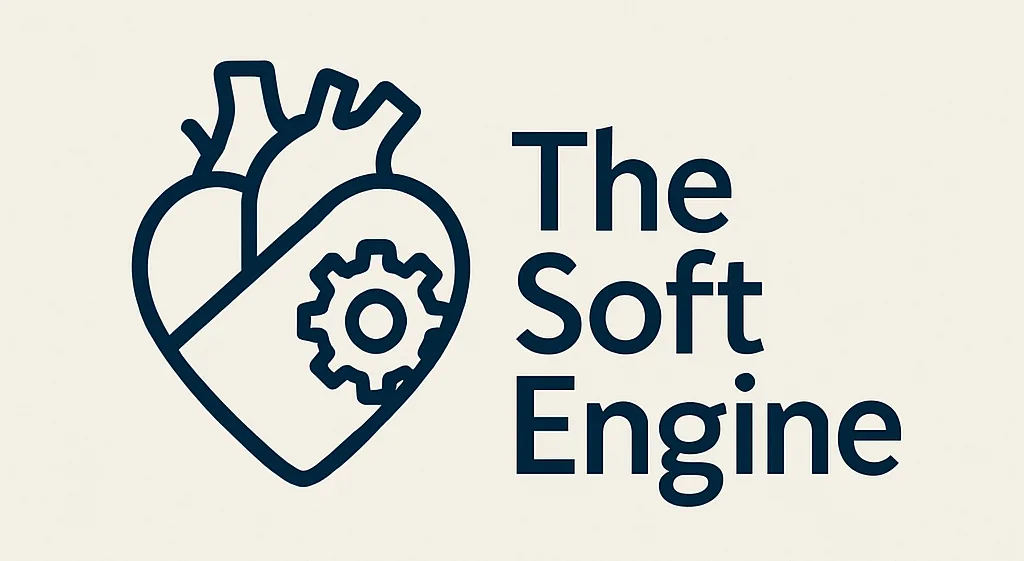The Soft Engine Productivity Assessment
This research-backed assessment helps you see where your productivity thrives—and where burnout or inefficiency might be hiding.
Your Science-Based Productivity Profile
Understanding Your Results
Each part of your score connects to a different piece of productivity. Here’s how to read them:
Work Performance (Task, Context, Counterproductive Behavior)
- Higher scores: You’re meeting deadlines and likely supporting colleagues along the way.
- Lower scores: You may be feeling stretched, skipping steps, or struggling to keep pace — signs that workload or focus needs attention.
Practical step: If this area feels low, experiment with smaller task lists or clear work boundaries for one week and notice the difference.
Mental Workload (Demand, Pressure, Frustration)
- Higher scores: You’re under heavy mental strain, which might push performance in the short term but can drain you fast.
- Lower scores: Tasks feel manageable, though too low may mean you’re under-challenged.
Practical step: If this feels high, build in micro-breaks (2–3 minutes away from the screen every hour).
Psychological Resilience (Resilience, Self-Efficacy, Optimism)
- Higher scores: You bounce back quickly and trust yourself to handle problems.
- Lower scores: Challenges may feel heavier, and optimism may be slipping.
Practical step: Try one small “quick win” task each morning to rebuild momentum and confidence.
Work Design (Autonomy, Meaning, Feedback)
- Higher scores: Your role feels meaningful, and you have space to decide how you work.
- Lower scores: You may feel boxed in or disconnected from impact.
Practical step: If this resonates, ask yourself: Which part of my work feels most meaningful? How can I spend 10% more time there?
Life Balance (Energy, Rest, Focus)
- Higher scores: You’re holding a steady rhythm of rest, energy, and focus.
- Lower scores: Balance feels off, leaving you tired or scattered.
Practical step: Choose one area — sleep, movement, or downtime — and commit to a single small improvement this week.
Important Note: These results are for reflection, not diagnosis. They can highlight patterns, but they are not a medical or psychological assessment. If something feels overwhelming or persistent, consider speaking with a trusted professional.
About The Assessment
This assessment is designed to give you a gentle snapshot of your productivity — not just how much you get done, but how your energy, focus, and resilience are holding up along the way.
Productivity isn’t only about ticking boxes; it’s about finding a rhythm that feels sustainable. Think of this as a guided reflection, a way to pause and notice what supports your work and what might be quietly draining it.
The questions are simple, but they’re rooted in established research frameworks, including the IWPQ, NASA-TLX, PsyCap, the Job Characteristics Model, and the WHOQOL-BREF.
By weaving these perspectives together, the assessment looks beyond output alone. It helps you consider the whole picture — from efficiency and collaboration to stress, optimism, and balance. What you’ll see at the end is your current profile: a set of insights into where you’re thriving and where you might need more support.
It’s important to say that this is not a medical or psychological diagnostic tool. Your results are not meant to diagnose or treat any condition.
Instead, they’re a way to build awareness, spark reflection, and highlight patterns you might want to explore further. If something resonates deeply, take it as a prompt — a nudge to recalibrate, celebrate progress, or simply give yourself permission to work in a way that feels more like you.

